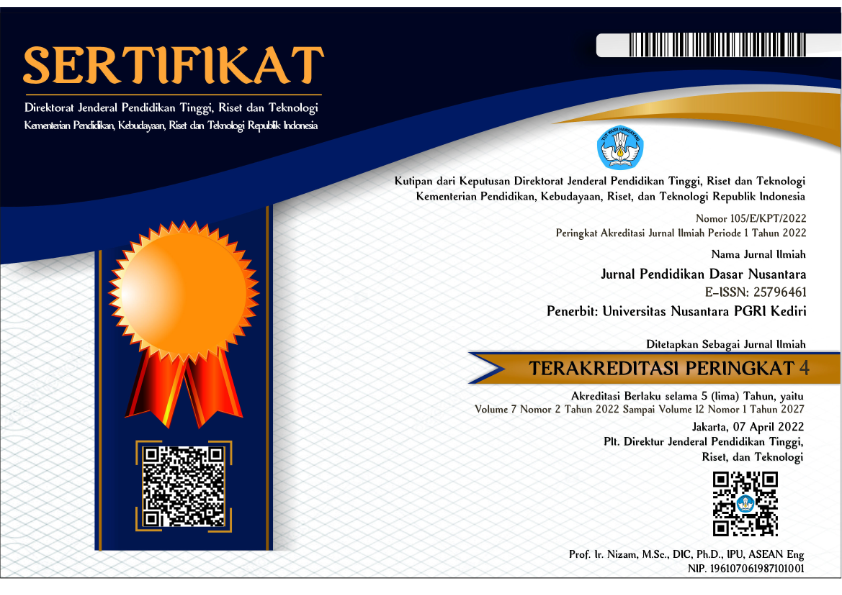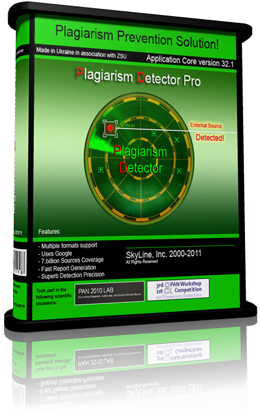Relationship between critical thinking and creative thinking through zoom meeting on science learning in elementary school
DOI:
https://doi.org/10.29407/jpdn.v7i2.16819Keywords:
Critical thinking; creative thinking; zoom meetings; IPAAbstract
Humans are social creatures who need to develop themselves in facing life in society. To understand something, a person's way of thinking is influenced by knowledge, the ability to see, and the ability to create a strategy in thinking. One of them is in the education. Based on observations, it is shown that the learning carried out by the teacher when teaching is less varied so that it seems monotonous and the questions asked by the teacher are not in-depth only in the cognitive domains of C1 and C2. Lack of direct application (practice) when learning and the work made by students is less innovative. Through the zoom application, students can also do online learning. This study aims to determine the relationship between students' critical and creative thinking through the Zoom application and science learning outcomes. The type of research used in this research is quantitative correlational type. The subjects of this study were fifth grade students of SD Muhammadiyah 8 Surabaya. From the research that has been carried out, the results obtained are: (1) There is a relationship between critical thinking through the Zoom application and science learning outcomes, because the value of Sig. < 0.05 (0.008 < 0.05); (2) There is a relationship between creative thinking through the Zoom application and science learning outcomes, because the value of Sig. < 0.05 (0.006 < 0.05); (3) There is a relationship between critical and creative thinking through the Zoom application with science learning outcomes because of the value of Sig. < 0.05 (0.009 < 0.05)
Downloads
References
Afiani, KDA, & Faradita, MN (2021). USING THE QUIZIZZ APPLICATION TO INCREASE LEARNING OUTCOME OF PGSD STUDENTS DURING THE COVID-19 PANDEMIC. PROCEEDING UM SURABAYA, 1(1).
Alatas, F. (2014). The relationship between concept understanding and critical thinking skills through the Treffinger learning model in basic physics courses. Education, 6(1), 87–96.
Antari, NLPY, Wiarta, IW, & Putra, M. (2017). The Influence of the Two Stay Two Stray Cooperative Learning Model on Science Learning Outcomes for Class IV Ganesha University of Education. Ganesha University of Education PGSD E-Journal, 5(2), 1–10. Retrieved from http://ejournal.undiksha.ac.id/index.php/JJPGSD/article/download/10928/7004
Arikunto, S. (2010). Research Procedures: A Practical Approach. Jakarta: Rineka Cipta.
Ennis, CD (2017). Educating students for a lifetime of physical activity: Enhancing mindfulness, motivation, and meaning. Research Quarterly for Exercise and Sport, 88(3), 241–250.
Faradita, MN (2018). Application of CLIS Learning by Using Simple Teaching Aids to Improve Problem Solving Thinking Skills.
Huda, MM, & Rahman, L. (2020). Relationship between Critical Thinking Skills and Learning Outcomes of Elementary School Students. Journal of Character Pens (Journal of Children and Character Education), 2(2), 42–47.
Komalasari, F. (2012). The Effect of Marketing Mix on the Decision to Purchase Nokia Eseries Mobile Products. Journal of Management, (100), 1–13.
Kuntarto, E., Sofwan, M., & Mulyani, N. (2021). Analysis of the Benefits of Using the Zoom Application in Online Learning for Teachers and Students in Elementary Schools. JOURNAL OF BASIC EDUCATION NUSANTARA, 7(1), 49–62.
Kusuma, AP, & Khoirunnisa, A. (2018). Application of the Make a Match Type Cooperative Learning Model and Team Games Tournament on Learning Outcomes. NUMERICAL: Journal of Mathematics and Mathematics Education, 2(1), 1–14. https://doi.org/https://doi.org/10.25217/numerical.v2i1.186,
Neka, IK, Marhaeni, MAPAAIN, & Suastra, MPPIW (2015). The effect of the guided inquiry learning model based on the environment on creative thinking skills and mastery of science concepts for Class V Elementary School Gugus VIII, Abang District. Ganesha University of Education.
Neolaka, YAB (2017). Development of Activated Ende Flores Natural Zeolite Adsorbent Modified By Ionic Imprinting Polymer For Cr (Vi) Analysis In. Airlangga University.
Nuruddin, M. (2018) Improving Creative Thinking Skills by Using the Mind Mapping Method in Science Education Courses for Elementary School Early Grades PGSD Students Faculty of Education Hasyim Asy'ari University ELSE (Elementary School Education Journal): Journal of Elementary School Education and Learning, 2(1), 59–77.
Putra, DA (2018). CTL-Based Learning and Inquiry to Improve Students' Critical Thinking Ability ELSE (Elementary School Education Journal): Journal of Elementary School Education and Learning, 2(2), 55–67.
Rahayuni, G. (2016) Relationship of critical thinking skills and scientific literacy in integrated science learning with PBM and STM models Journal of Science Research and Learning, 2 (2), 131–146.
Samatowa, U. (2016). Science Learning in Elementary Schools. (Bambang Sarwidji, Ed.). Jakarta: PT Index.
Saputri, NI (2014). Efforts to Improve Critical Thinking Skills for Class V Students through Guided Inquiry on Science Subjects at SDN Punukan, Wates, Kulon Progo 2013/2014 Academic Year. Thesis of Elementary School Teacher Education Study Program, Department of Pre-School and Elementary Education, Faculty of Education, Yogyakarta State University.
Sugiyono. (2019). Qualitative Quantitative Research Methods and R&D. Bandung: Alphabeta.
Sugiyono, S. (2016). Quantitative, Qualitative, and R&D Research Methods. Bandung: Alphabeta.
Sulistiani, E., & Masrukan, M. (2017). The importance of critical thinking in learning mathematics to face the challenges of MEA. In PRISMA, Proceedings of the National Mathematics Seminar (pp. 605–612).
Susanto, E., & Retnawati, H. (2017). Mathematics learning tools with PBL characteristics to develop HOTS for high school students. Journal of Mathematics Education Research, 3(2), 189. https://doi.org/10.21831/jrpm.v3i2.10631
Wulandari, N. (2014). The effectiveness of CIRC learning with an open-ended approach to the creative thinking skills of class VIII students with cube-block material. Unnes Journal of Mathematics Education, 3(3).
Downloads
Published
Issue
Section
License
Authors who publish with this journal agree to the following terms:
- Copyright on any article is retained by the author(s).
- The author grants the journal, the right of first publication with the work simultaneously licensed under a Creative Commons Attribution License that allows others to share the work with an acknowledgment of the work’s authorship and initial publication in this journal.
- Authors are able to enter into separate, additional contractual arrangements for the non-exclusive distribution of the journal’s published version of the work (e.g., post it to an institutional repository or publish it in a book), with an acknowledgment of its initial publication in this journal.
- Authors are permitted and encouraged to post their work online (e.g., in institutional repositories or on their website) prior to and during the submission process, as it can lead to productive exchanges, as well as earlier and greater citation of published work.
- The article and any associated published material is distributed under the Creative Commons Attribution-ShareAlike 4.0 International License

































